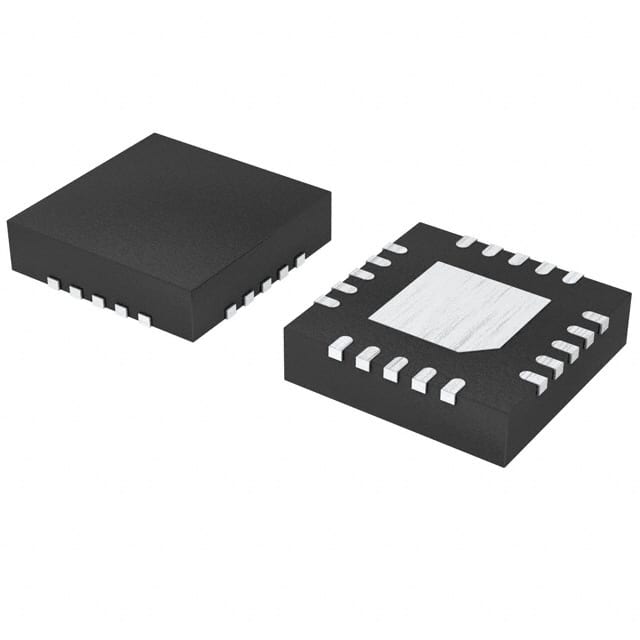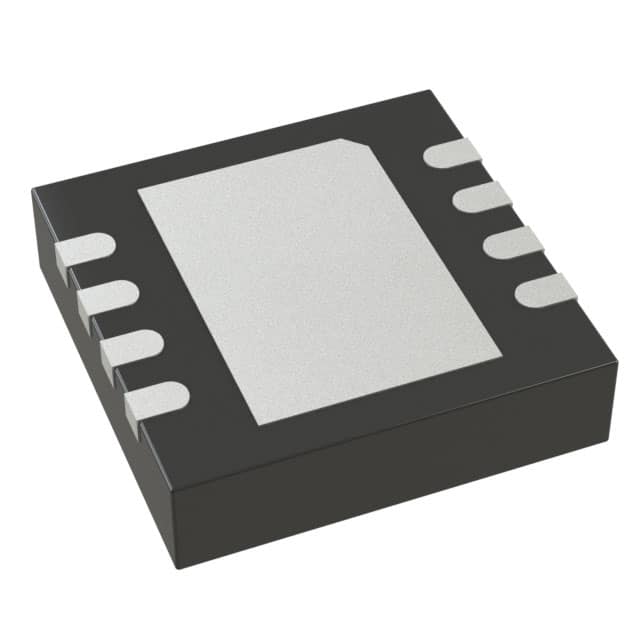Ⅰ. PMIC - Power Management - Specialized
Ⅱ. Physical Characteristics of PMIC - Power Management - Specialized
Ⅲ. Electrical Characteristics of PMIC - Power Management - Specialized
PMIC - Power Management - Specialized
PMIC, which stands for Power Management Integrated Circuit, is a specialized electronic component that is designed to manage and regulate power in electronic devices. It plays a crucial role in ensuring the efficient and reliable operation of various subsystems within a device by providing the necessary power in the right form and at the right time.

In today's electronic devices, such as smartphones, tablets, wearables, and IoT devices, power management is a critical aspect. These devices often consist of multiple components with varying power requirements, and the PMIC serves as a central hub for power management, combining several functions into a single chip.
The primary function of a PMIC is to regulate the input voltage, convert it to different voltage levels required by various components, and distribute power to different subsystems within the device. By integrating multiple power-related functions into a single chip, PMICs simplify the design process and reduce the space and cost associated with discrete power management components.
One of the key functions of a PMIC is voltage regulation. It ensures that the input voltage is stabilized and matches the required voltage levels of different components. This is essential because different parts of a device may require different voltage levels for proper operation. The PMIC regulates the voltage levels and provides multiple output voltages to power the CPU, memory, display, sensors, and other subsystems.
PMICs also include power conversion capabilities. They incorporate DC-DC converters that transform the input voltage to various lower voltage levels required by different components. This allows efficient power distribution and helps to reduce power consumption, heat dissipation, and overall system complexity.
Another important feature of PMICs is battery management. Many portable electronic devices rely on batteries for power. PMICs include charging circuits that manage the battery charging process. They support different charging techniques, such as trickle charging, fast charging, and wireless charging, to cater to the specific needs of the device.
Moreover, PMICs offer power monitoring and protection features. They continuously monitor power-related parameters like voltage, current, and temperature to ensure safe and reliable operation. PMICs can protect the device and its components from overvoltage, overcurrent, and overheating conditions, thus enhancing device reliability and preventing potential damage.
Additionally, PMICs contribute to power efficiency in electronic devices. They employ techniques like voltage scaling and power gating to optimize power consumption. By dynamically adjusting voltage levels and selectively powering off unused components, PMICs help extend battery life and enhance overall energy efficiency.
In summary, PMICs are specialized integrated circuits that provide comprehensive power management capabilities to electronic devices. They regulate voltage, convert power, distribute it to various subsystems, manage battery charging, monitor power parameters, and protect the device. PMICs are instrumental in ensuring the efficient operation, power optimization, and overall performance of modern electronic devices.
Physical Characteristics of PMIC - Power Management - Specialized
PMICs, or Power Management Integrated Circuits, come in various physical forms and packages. The specific physical characteristics of a PMIC can vary depending on factors such as the application, power requirements, and manufacturing technology. Here are some common physical characteristics of PMICs:
1.Package Type: PMICs are typically packaged in integrated circuit packages that provide electrical connections and physical protection. Common package types include quad flat no-leads (QFN), ball grid array (BGA), small outline integrated circuit (SOIC), and flip-chip packages. The package type determines the external dimensions, pin count, and thermal characteristics of the PMIC.
2.Size: PMICs come in a range of sizes, typically specified by the dimensions of the package. The size of a PMIC is influenced by the complexity of the integrated circuits and the number of power management functions integrated into the chip. Miniaturization is a trend in the industry, with PMICs becoming smaller to meet the demands of compact electronic devices.
3.Pin Count: The number of pins on a PMIC depends on the functionality and complexity of the device. PMICs can have a few pins for simpler applications or many pins for more advanced devices. The pins provide electrical connections for power inputs and outputs, control signals, communication interfaces, and external components like capacitors and inductors.
4.Thermal Considerations: PMICs generate heat during operation, particularly when managing power conversion. To ensure proper functioning and reliability, PMICs require effective thermal management. This may include thermal pads or exposed heat sinks on the package to dissipate heat, or the use of additional thermal solutions like heat sinks or thermal vias on the PCB.
5.Mounting: PMICs are mounted on printed circuit boards (PCBs) using surface-mount technology (SMT). They are soldered onto the PCB using reflow soldering techniques. The specific mounting method depends on the package type, and it is crucial to follow the manufacturer's guidelines for proper mounting and soldering techniques to ensure a reliable electrical connection.
6.Input/Output Interfaces: PMICs may have different types of input/output interfaces, depending on the specific application and device requirements. These interfaces can include voltage input pins, power output pins, control pins for configuration and enable/disable functionality, and communication interfaces such as I2C (Inter-Integrated Circuit) or SPI (Serial Peripheral Interface) for device control and monitoring.
7.Markings and Labels: PMICs typically have markings and labels on the package, which provide important information such as the manufacturer's logo, part number, date codes, and pin identification. These markings help identify and differentiate the PMIC from other components and facilitate proper usage and documentation.
It's important to note that the physical characteristics of PMICs can vary significantly depending on the specific product, manufacturer, and application. It's always recommended to refer to the datasheet or technical documentation provided by the PMIC manufacturer for detailed specifications and information on the physical characteristics of a specific PMIC.

Electrical Characteristics of PMIC - Power Management - Specialized
PMICs (Power Management Integrated Circuits) have various electrical characteristics that determine their performance and suitability for specific applications. These characteristics define the electrical behavior and capabilities of the PMIC. Here are some common electrical characteristics of PMICs:
1.Input Voltage Range: PMICs have a specified input voltage range within which they can operate effectively. This range indicates the minimum and maximum voltages that the PMIC can accept as an input. It is crucial to ensure that the input voltage supplied to the PMIC falls within this specified range for proper operation.
2.Output Voltage Range: PMICs provide regulated output voltages to power different components or subsystems within a device. The output voltage range specifies the minimum and maximum voltage levels that the PMIC can generate. It is essential to select a PMIC that can supply the required output voltage(s) for the specific device and its components.
3.Output Current Capability: PMICs have a maximum output current rating that indicates the maximum amount of current they can supply to the load. This rating is crucial for selecting a PMIC that can meet the power requirements of the target application. It is important to consider the power demands of the device and ensure that the PMIC can deliver the required current without exceeding its limitations.
4.Efficiency: PMICs have an efficiency rating that indicates how efficiently they convert input power to output power. It represents the percentage of power that is effectively delivered to the load versus the power consumed by the PMIC itself. Higher efficiency implies less power loss and improved energy utilization.
5.Operating Temperature Range: PMICs have a specified temperature range within which they can operate reliably. This range defines the minimum and maximum temperatures at which the PMIC can function without performance degradation or potential damage. It is crucial to consider the operating temperature requirements of the device and select a PMIC that can withstand the anticipated temperature conditions.
6.Power Sequencing: Some PMICs support power sequencing, which refers to the specific order and timing of turning on and off different power supplies within a device. This characteristic ensures proper operation and prevents potential issues that may arise from improper power-up or power-down sequences. PMICs with power sequencing capabilities can be programmed or controlled to follow the required power-up and power-down sequences.
7.Protection Features: PMICs often incorporate protection features to safeguard the device and its components from potential electrical faults. These features may include overvoltage protection, overcurrent protection, undervoltage lockout, thermal shutdown, and short-circuit protection. These protection mechanisms help prevent damage to the device and ensure safe operation.
8.Control and Communication Interfaces: PMICs may offer various control and communication interfaces to configure and monitor their operation. These interfaces can include I2C (Inter-Integrated Circuit), SPI (Serial Peripheral Interface), or other proprietary protocols. They allow for device-specific configuration, status monitoring, and control of the PMIC's functions.
It's important to note that the specific electrical characteristics of a PMIC can vary depending on the manufacturer, product family, and application requirements. When selecting a PMIC, it is essential to consult the datasheet or technical documentation provided by the manufacturer to understand the electrical specifications and ensure compatibility with the device's power requirements.



